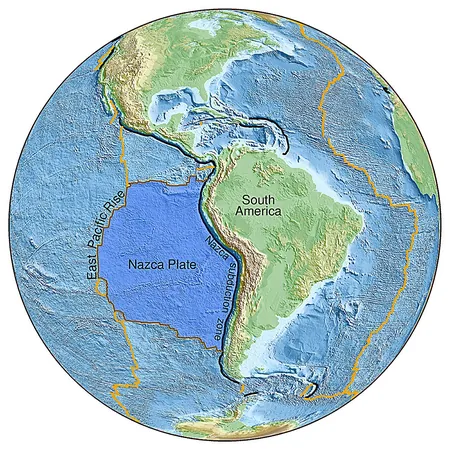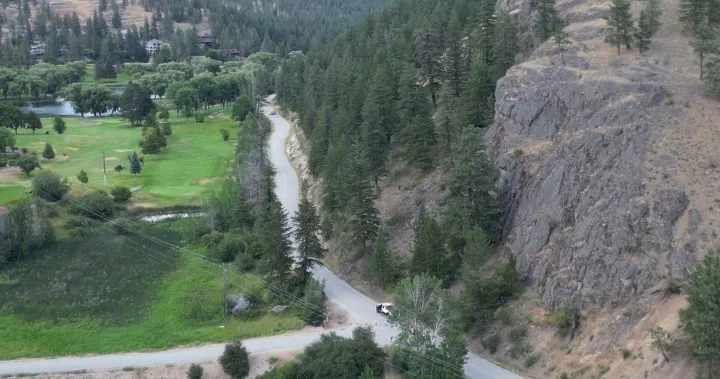
Groundbreaking Discovery of Ancient Seafloor Challenges Our View of Earth's Inner Workings
2024-09-28
Author: Noah
In an astonishing revelation, a team of scientists from the University of Maryland has unearthed evidence of an ancient seafloor that plunged deep into the Earth more than 250 million years ago—a finding that could fundamentally reshape our understanding of the planet's interior. This research, focusing on the East Pacific Rise—an active tectonic plate boundary—highlights a region that has remained shrouded in mystery until now. The team's significant findings were published in the esteemed journal Science Advances on September 27, 2024.
Seismic Imaging Techniques Unveiled
Led by postdoctoral researcher Jingchuan Wang, the scientists employed cutting-edge seismic imaging techniques to delve into Earth’s mantle, the dense layer situated between the crust and the core. Their investigation revealed a surprisingly thick segment within the mantle transition zone, positioned about 410 to 660 kilometers below the Earth's surface. This region is known for separating the upper and lower mantles, with its thickness varying according to temperature. The discovery of this ancient seafloor could also account for the peculiar structure of the Pacific Large Low Shear Velocity Province (LLSVP), a massive expanse within the Earth's lower mantle that appears to be disrupted by the subducted slab.
A Fossilized Fingerprint
“This thickened area acts like a fossilized fingerprint of an ancient piece of seafloor,” Wang described. “It offers a rare glimpse into Earth's geological history that we've never had access to before.”
Subduction and Seismic Wave Analysis
Subduction—a process whereby one tectonic plate slides beneath another—recycles material from the surface back into the mantle. This dynamic not only contributes to the formation of volcanic activity and earthquakes but also creates deep marine trenches. While traditional approaches often rely on examining surface samples, Wang's team transcended this methodology by harnessing seismic waves to investigate the ocean floor. Their intricate mapping of subsurface structures was enabled through the study of how these waves propagated across various layers of the Earth.
Innovative CT Scan for the Earth
“Seismic imaging is akin to a CT scan for our planet, allowing us to visualize its internal structures in cross-sectional views,” Wang noted. “Typically, oceanic slabs are fully consumed by the Earth, leaving little evidence of their existence. However, this perspective allows us to connect deep Earth formations to surface geology in ways previously obscured.”
Unexpected Findings in Material Descent
The results were unexpected: material in this region was descending at significantly slower rates than models had suggested. This phenomena points to the existence of cooler material within the mantle transition zone, implying that some oceanic slabs may encounter resistance partway through the mantle.
Implications of the Research
“We discovered that in this area, material was sinking at about half the anticipated speed,” Wang explained. “This indicates that the mantle transition zone can function as a barrier, impeding material movement within the Earth. Our work raises new inquiries regarding how deep-Earth processes influence surface features over extensive timescales.”
Future Research Directions
Looking forward, the team is eager to expand their investigations to other regions of the Pacific and beyond. Wang envisions creating a detailed map of ancient subduction and upwelling zones, exploring their effects on both deep and shallow geological structures. Armed with the seismic data gathered, scientists aim to refine models that trace the movement of tectonic plates throughout Earth's extensive history.
A New Era in Geological Understanding
“This is merely the beginning,” Wang asserted. “We believe countless remnants of ancient geological features exist within Earth's depths, each holding the potential to enhance our comprehension of our planet’s convoluted past—an understanding that could even extend to other celestial bodies.”
Conclusion
Stay tuned as this groundbreaking research paves the way for an evolutionary leap in geology, potentially unlocking secrets of our planet’s formation and the intricate dance of tectonic movements that shape not only Earth but our entire solar system!









 Brasil (PT)
Brasil (PT)
 Canada (EN)
Canada (EN)
 Chile (ES)
Chile (ES)
 Česko (CS)
Česko (CS)
 대한민국 (KO)
대한민국 (KO)
 España (ES)
España (ES)
 France (FR)
France (FR)
 Hong Kong (EN)
Hong Kong (EN)
 Italia (IT)
Italia (IT)
 日本 (JA)
日本 (JA)
 Magyarország (HU)
Magyarország (HU)
 Norge (NO)
Norge (NO)
 Polska (PL)
Polska (PL)
 Schweiz (DE)
Schweiz (DE)
 Singapore (EN)
Singapore (EN)
 Sverige (SV)
Sverige (SV)
 Suomi (FI)
Suomi (FI)
 Türkiye (TR)
Türkiye (TR)
 الإمارات العربية المتحدة (AR)
الإمارات العربية المتحدة (AR)